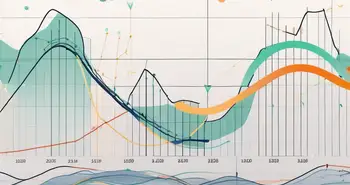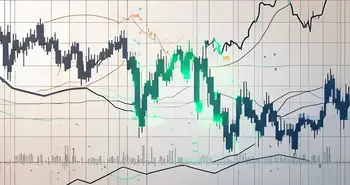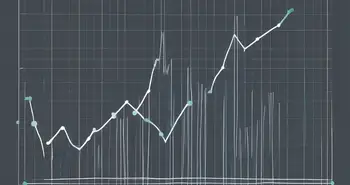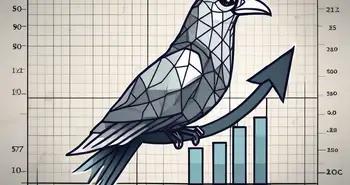Mastering the Moving Average Crossover Strategy
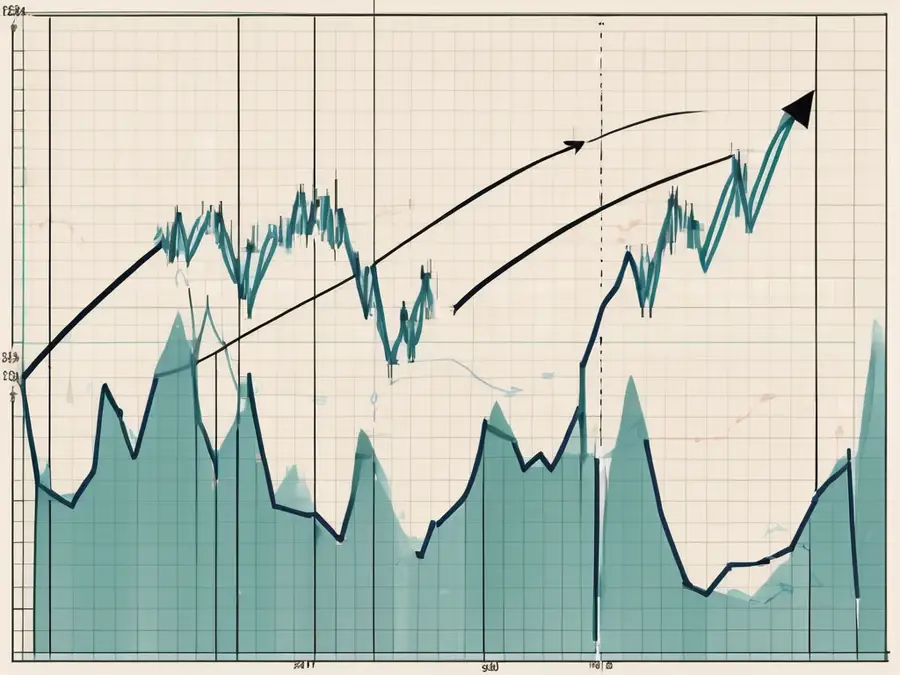
In the fast-paced world of trading, it's crucial to have a strategy that can help you make informed decisions. One such strategy that has gained popularity among traders is the Moving Average Crossover Strategy. By understanding the basics and implementing this strategy effectively, you can enhance your trading decisions and improve your success rate. In this article, I will guide you through the ins and outs of the Moving Average Crossover Strategy, providing you with valuable insights and tips to master this technique.
Understanding the Basics of Moving Average Crossover Strategy
Before diving into the details, let's first understand what the Moving Average Crossover Strategy entails. Simply put, this strategy involves the use of two or more moving averages that intersect. The crossing of these moving averages indicates potential buy or sell signals, providing traders with an opportunity to enter or exit a position.
The Moving Average Crossover Strategy relies on the principle that moving averages with different timeframes can help identify trends and potential price reversals. By analyzing the relationship between these moving averages, traders can gain a better understanding of market sentiment and make well-informed trading decisions.
What is Moving Average Crossover Strategy?
The Moving Average Crossover Strategy is a technical analysis tool that helps traders identify potential buy or sell signals by analyzing the crossing of two or more moving averages. It serves as an indicator to spot potential trend changes, allowing traders to enter or exit a position at the right time.
Key Components of Moving Average Crossover Strategy
When implementing the Moving Average Crossover Strategy, two key components come into play: the short-term moving average and the long-term moving average. The short-term moving average reacts more quickly to price changes, while the long-term moving average smoothes out the fluctuations, providing a broader picture of the market trend.
By analyzing the crossover of these two moving averages, traders can identify potential entry or exit points. When the short-term moving average crosses above the long-term moving average, it signals a bullish trend, indicating a potential buying opportunity. Conversely, when the short-term moving average crosses below the long-term moving average, it signals a bearish trend, suggesting a potential selling opportunity.
The Importance of Moving Average Crossover in Trading
Now that we understand the basics of the Moving Average Crossover Strategy, let's explore why it is crucial in the world of trading and how it can enhance your trading decisions.
Enhancing Trading Decisions with Moving Average Crossover
The Moving Average Crossover Strategy can help traders make more informed decisions by identifying potential trend changes. By analyzing the crossover of moving averages, traders can spot the beginning or end of a trend, allowing them to enter or exit a position at an optimal time. This strategy helps traders avoid entering a position too early or too late, increasing the likelihood of success.
For example, let's say the short-term moving average crosses above the long-term moving average. This indicates a bullish trend, suggesting that it may be a good time to buy. By using the Moving Average Crossover Strategy, traders can take advantage of potential upward trends and maximize their profits.
Risk Management and Moving Average Crossover
Effective risk management is a crucial aspect of successful trading. The Moving Average Crossover Strategy can aid in risk management by providing traders with exit signals. When the short-term moving average intersects with the long-term moving average in the opposite direction, it signals a potential trend reversal.
By paying attention to these signals, traders can minimize their losses by exiting a position before the trend fully reverses. This strategy helps traders protect their capital and enables them to take calculated risks, ultimately increasing their chances of long-term profitability.
Types of Moving Average Crossovers
There are two main types of moving average crossovers that traders commonly use: the Simple Moving Average (SMA) Crossover and the Exponential Moving Average (EMA) Crossover.
Simple Moving Average Crossover
The Simple Moving Average Crossover involves the calculation of the average closing prices over a specific period. When the short-term SMA crosses above the long-term SMA, it signals a potential buy signal. Conversely, when the short-term SMA crosses below the long-term SMA, it indicates a potential sell signal.
Exponential Moving Average Crossover
The Exponential Moving Average Crossover is similar to the SMA Crossover, but it places greater emphasis on recent price data. The EMA assigns more weightage to recent prices, making it more responsive to changes in the market. This type of crossover can provide quicker signals but may also be more prone to false signals compared to the SMA crossover.
Implementing the Moving Average Crossover Strategy
Now that you have a good understanding of the Moving Average Crossover Strategy, let's explore how you can implement this strategy effectively in your trading routine.
Steps to Apply the Moving Average Crossover Strategy
- Choose your timeframes: Determine the short-term and long-term moving average periods that align with your trading style and goals.
- Select the appropriate moving averages: Decide whether you want to use the Simple Moving Average or the Exponential Moving Average for your strategy.
- Identify the trend direction: Analyze the crossover of the moving averages to identify the trend direction. Look for bullish signals (short-term moving average crossing above the long-term moving average) or bearish signals (short-term moving average crossing below the long-term moving average).
- Confirm the signal with other indicators: Validate the moving average crossover with other technical indicators or price action patterns to increase the probability of success.
- Enter or exit the position: Once you have confirmed the signal, execute your trade by either entering a long position (buying) or a short position (selling).
Tips for Successful Implementation
- Backtest your strategy: Before implementing the Moving Average Crossover Strategy in real-time trading, backtest it using historical data to evaluate its performance and fine-tune the parameters.
- Consider market conditions: Take into account the overall market conditions and volatility before relying solely on the Moving Average Crossover Strategy. It is essential to adapt your strategy to the current market environment.
- Combine with other indicators: Enhance the accuracy of your signals by using other technical indicators or chart patterns that align with your strategy.
- Manage risk: Set appropriate stop-loss orders to limit potential losses and protect your capital. Additionally, consider the risk-to-reward ratio before entering a position.
Common Mistakes and How to Avoid Them
While the Moving Average Crossover Strategy can be a powerful tool in your trading arsenal, it's important to be aware of common pitfalls and mistakes that traders often encounter.
Over-reliance on Moving Average Crossover
One common mistake is over-relying on Moving Average Crossover signals alone. While this strategy can be effective, it's crucial to consider other factors such as market conditions, economic news, and other technical indicators. By incorporating multiple sources of information, you can make more well-rounded trading decisions.
Ignoring Market Trends
Another common mistake is disregarding market trends and solely relying on Moving Average Crossover signals. It's important to analyze the overall market direction and align your strategy accordingly. Ignoring market trends may lead to taking positions contrary to the prevailing market sentiment, resulting in avoidable losses.
FAQs
What is the Moving Average Crossover Strategy?
The Moving Average Crossover Strategy is a technical analysis tool that involves the crossing of two or more moving averages. It helps traders identify potential buy or sell signals and assists in making well-informed trading decisions.
How does Moving Average Crossover enhance trading decisions?
The Moving Average Crossover Strategy enhances trading decisions by identifying potential trend changes. It helps traders enter or exit positions at optimal times, avoiding premature entries or late exits.
What are the key components of the Moving Average Crossover Strategy?
The key components of the Moving Average Crossover Strategy are the short-term moving average and the long-term moving average. The crossover of these two moving averages signals potential entry or exit points.
Which types of Moving Average Crossovers are commonly used?
Traders commonly use the Simple Moving Average (SMA) Crossover and the Exponential Moving Average (EMA) Crossover.
How can I implement the Moving Average Crossover Strategy effectively?
To implement the Moving Average Crossover Strategy effectively, define your timeframes, select appropriate moving averages, identify the trend direction, confirm the signal with other indicators, and execute your trade accordingly.
What are some tips for successful implementation of the Moving Average Crossover Strategy?
Some tips for successful implementation include backtesting your strategy, considering market conditions, combining with other indicators, and managing risk through appropriate stop-loss orders.
What are common mistakes to avoid when using the Moving Average Crossover Strategy?
Common mistakes to avoid include over-reliance on Moving Average Crossover signals and ignoring market trends. It's important to consider multiple factors and indicators when making trading decisions.
Now that you are equipped with the knowledge of the Moving Average Crossover Strategy, I encourage you to test it out in a demo account and gain hands-on experience. Remember, successful trading requires a combination of skill, discipline, and the ability to adapt to ever-changing market conditions. With practice and perseverance, you can master the Moving Average Crossover Strategy and pave your way to trading success.
Ready to put the Moving Average Crossover Strategy into action? Discover the innovative world of trading with Morpher, the platform that's redefining the investing landscape. Experience zero fees, infinite liquidity, and the flexibility of fractional investing and short selling. Take control of your trades with the safety of the Morpher Wallet, and if you're up for it, leverage your trades up to 10x. Join Morpher today, where trading meets the cutting-edge technology of blockchain, and start with a boost—Sign Up and Get Your Free Sign Up Bonus.

Disclaimer: All investments involve risk, and the past performance of a security, industry, sector, market, financial product, trading strategy, or individual’s trading does not guarantee future results or returns. Investors are fully responsible for any investment decisions they make. Such decisions should be based solely on an evaluation of their financial circumstances, investment objectives, risk tolerance, and liquidity needs. This post does not constitute investment advice.

Painless trading for everyone
Hundreds of markets all in one place - Apple, Bitcoin, Gold, Watches, NFTs, Sneakers and so much more.

Painless trading for everyone
Hundreds of markets all in one place - Apple, Bitcoin, Gold, Watches, NFTs, Sneakers and so much more.

